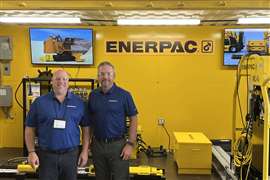Changes in China
29 January 2014

The Chinese government’s current Five-Year Plan (2011 to 2015) sees a shift in emphasis from the rapid economic growth of previous years to higher quality, sustainable growth for the future.
While this means that local governments on the front line of infrastructure development are facing fiscal constraints as a result, this is not to say that activity is stagnating – far from it. A number of very large road, rail, energy, water and port developments are still going ahead across the country.
Last year, for instance, plans for a second international airport in the capital, Beijing, were approved – the budget for which is reported by state media to be CNY 70 billion (US$ 11.2 billion). The new airport will be located in Daxing district in southern Beijing and feature six commercial runways and one military runway, as well as a 37 km rail line connecting it to the city centre.
Construction is scheduled to start in 2014, with opening planned for 2018. It will handle 45 million passengers a year in the beginning and up to 70 million passengers by 2025.
In fact, December 2013 saw the Asian Development Bank (ADB) upgrade its outlook for China’s GDP growth by 0.1 percentage point to +7.7% in 2013 and +7.5% in 2014 – a forecast boosted by rising infrastructure investment in the country.
Housing supply in China has also increased in recent years to meet demand. According to the ADB, further residential construction is forecast, with 36 million new affordable homes planned under the 12th Five Year Plan at an estimated cost of CNY 5 trillion (US$ 820 billion).
China overtook the US to become the world’s largest construction market in 2010, and is expected to increase its global share from 18% today to 26% in 2025, according to data from Global Construction Perspectives and Oxford Economics.
And on the scale of built assets – the accumulation of buildings, infrastructure, and machinery and equipment in a country – China is also gaining rapidly, and could become the owner of the world’s biggest built wealth as early as 2014, a report from EC Harris suggests.
Manufacturing
Meanwhile, change is also coming to the Chinese construction equipment market, with the coming years expected to be characterised by a slowdown in demand and a change in strategy from domestic manufacturers. At the same time, international companies are still fighting for market share in the country.
Liugong president Yu Chuanfen said, “All world giants in the industry are trying their utmost to snatch market share in China and set up factories or joint ventures in China.
“At present, there is still a gap between domestic enterprises and overseas ones in terms of technical strength. Core technologies of a number of key components are still dominated by foreign enterprises.
“What’s more, we still lack variable hydraulic components such as variable pumps and variable displacement motors required by high value-added and high technical hydraulic systems as well as advanced hydraulic components of mechanics-electronics-hydraulics integration,” he added that these components were still mainly dependent on importation.
Amd Lawrence Luo, president of Volvo CE region China, said, “Over the past decade, China has grown at a rapid pace. Though China’s growth has slowed, it is still a market with enormous potential. China’s government is clearly committed to infrastructure development, which provides excellent opportunities for companies in the construction business like Volvo CE.”
Mr Luo said Volvo CE had achieved steady growth in market share, performing well in 2013. “Since entering the market in 2002, we have developed a strong presence by implementing localised strategies – like our dual brand strategy – and offering diversified products that meet customers’ needs.”
Volvo’s dual brand strategy is its joint venture with Chinese construction equipment manufacturer SDLG, while Caterpillar has a similar arrangement with Chinese manufacturer SEM. In fact many international manufacturers are accessing China’s domestic market through acquisitions and joint ventures.
Meanwhile, speaking at the 2013 International Construction Economic Forum (ICEF), which took place from 20 to 22 November in Amsterdam, Off-Highway Research European analyst Paul Howard forecast that sales of construction equipment in China would increase from US$ 22.6 billion in 2013 to US$ 25.6 billion by 2017.
To put this in perspective, sales of construction equipment in China totalled US$ 37.1 billion in 2011. Mr Howard said demand built up very rapidly between 2005 and 2010, encouraged by massive investment and creating dangerous bubble.
“All manufacturers had unrealistically high expectations for the future,” Mr Howard said. “The government is now cooling down the GDP growth rate, leading to a reduction in construction expenditure and a sharp downturn in demand for equipment.”
This has resulted over-capacity in the domestic market. “Capacity is now 50% too great,” Mr Howard said. “Many OEMs now face huge liabilities, and new machines are being repossessed. There is also a very large young machine population, limiting new equipment sales.”
Mr Howard also said the perception of Brand China machines as being of poor quality with little customer support was more of a perception than reality.
Corruption
Indeed, as China moves ever closer to being the largest economy in the world, the government is also working hard to improve perceptions of corruption and quality in the countries construction industry.
For example, in July 2013 a Beijing court handed a two-year suspended death sentence to Liu Zhijun, China’s Minister for Railways from 2003 to 2011, for bribery and abuse of power in connection with construction of the country’s high-speed rail network.
The court’s verdict is likely to require Mr Liu, who admitted to accepting over US$ 140 million in cash bribes, as well as property and gifts, to spend at least ten years in jail. This case was clearly intended to send a signal both internally and to the world that China is cracking down on corrupt practises.
More recently, the president of Chinese state-owned contractor China Railway Group, Bai Zhongren, died suddenly. The company, which ranked as the third largest contractor in the world in the 2013 Global Top 200 with revenues of US$ 74.6 billion, said Mr Bai died in an accident. However, local media reported the 53 year-old executive’s fall from a building as suicide.
Mr Bai had not been implicated in any safety or corruption investigations, but his death added to the sense of pressure and turmoil that many commentators say has resulted from the rapid growth of China’s rail sector.
On the manufacturing side, international companies remain wary of competition from Chinese manufacturers, and not entirely without reason. Klaus Meissner, director of product integrity for Terex Cranes, says Terex is tracking reports of counterfeit CC 2500-1 Terex crawler cranes from China, for instance.
The company has set up an email address for customers to inquire about the authenticity of a crane they have purchased or is considering purchasing.
In 2011 Terex discovered counterfeit cranes being sold well under market value in China. The company said the Terex CC 2500-1 lattice boom crawler crane is the crane model of choice for the copycat manufacturers.
“We are aware of three different ‘designs’ of the CC 2500-1 crane on the market, and there are at least nine or 10 fake cranes that have been sold, all originating from China,” said Mr Meissner. “This is a serious situation, and, not only because this infringes on our intellectual property but, more importantly, it poses a serious safety risk for our customers. The use of these inferior, counterfeit cranes can result in deadly consequences.”
Raising standards
Having raised the living standards of hundreds of millions in the last 30 years, China is now seeking sustainable growth through overcoming challenges such as pollution, intensive energy use and resource depletion.
There have been and will continue to be bumps along the way, but this is a construction market that looks set to provide solid growth opportunities for international contractors and manufacturers alike in the coming
years.



